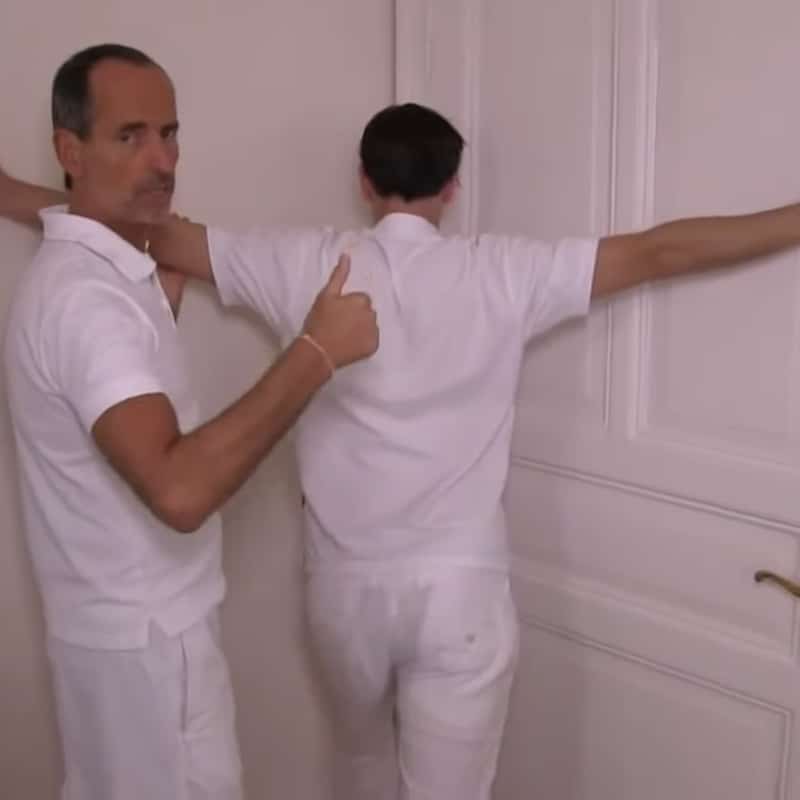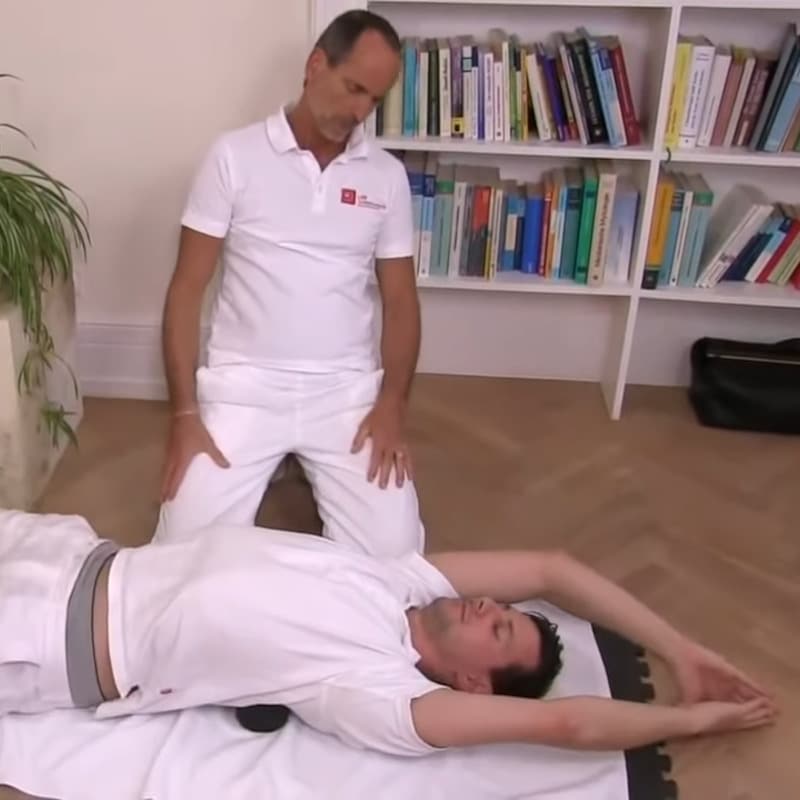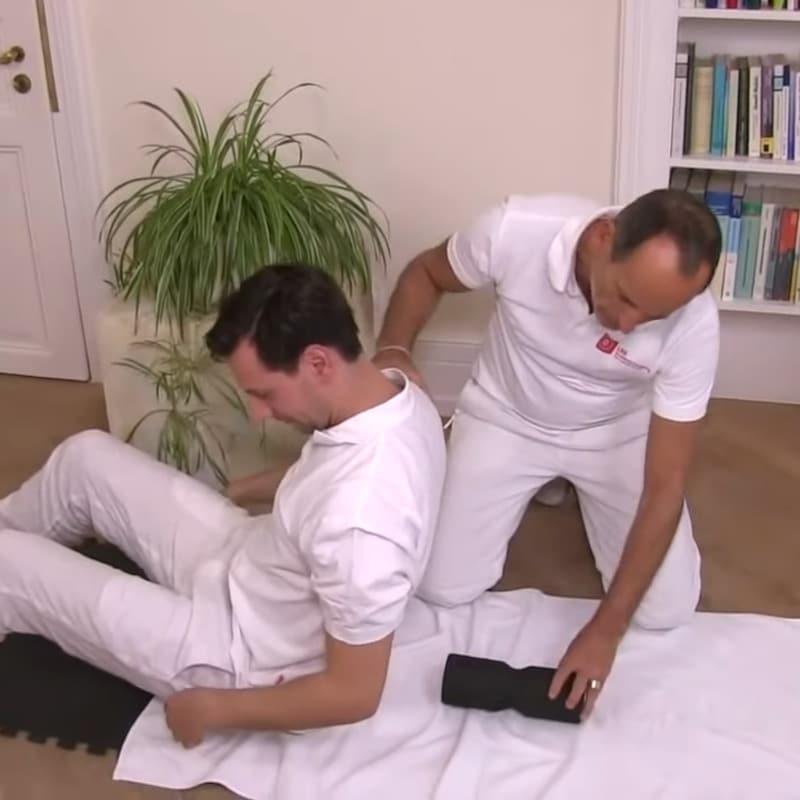Thoracic Back Pain Treatment
Body Part:
Back
Equipment:
Midi Foam Roller
Level:
Beginner
Body Part:
Back
Equipment:
Midi Foam Roller
Level:
Beginner
If you’re experiencing sharp pains, stiffness, or general aches and pains in your thoracic back (your middle or upper back) because of:
our 3-step thoracic back pain treatment may be able to relieve your discomfort. All you need for the routine is our Midi Foam Roller. Below our exercise video, you’ll find information about your thoracic spine and the common causes of the injuries and conditions our treatment helps against. Jump to our routine to start exercising.
Please see a doctor if you are experiencing severe pain in your back, the pain persists, worsens, interferes with your daily activities, or your back feels numb, tingly or weak, you have difficulty breathing, walking, maintaining balance, or you’ve lost control of your bladder or bowls.
Visit our online shop to get your Midi Foam Roller. We’ve got lots of pain-relieving tools and products waiting to be added to your cart.
Take me to the shop.

For this exercise, you’ll need our Midi Foam Roller.

Your spine consists of 33 bones called vertebrae, which protect your spinal cord. The bones of your spine are attached by facet joints. These joints provide stability and flexibility, allowing your spine to twist and turn. Between the vertebrae are jelly-like pads called intervertebral discs. The intervertebral discs cushion the spine, absorbing the shock of movement.
Your thoracic spine is located in your mid and upper back. It connects your cervical spine (neck) and lumbar spine (lower back). The thoracic spine consists of twelve vertebrae numbered T-1 to T-12, making it the longest section of your spine; it’s surrounded by muscles, tendons, ligaments, and nerves. Although the thoracic spine facilitates movement of your upper body, it’s more rigid than the cervical and lumbar spine, helping to stabilise your rib cage and keep you upright.
If the area around your thoracic spine aches, it could be because of:
Back muscle tension or irritation is usually the result of overuse. Weight training, running, or activities where you bend or twist repeatedly can overstress or irritate your back muscles.
A review of medical literature suggests that pain in the thoracic spine may be a significant workplace health issue.1) Psychological and emotional stress, poor posture, and sitting for long periods — all of which happen at work — may cause back pain.
A ligament is tissue that connects bone to bone. A sprain happens when the ligament is overstretched or tears. You may sprain a ligament in your back if you fall, twist suddenly, or dislocate a joint because of a sudden injury to the back.
A strain is when a muscle or tendon is torn, pulled, or twisted. You may experience a strain if you engage in any activity that requires repetitive movements or if you lift an object with improper form.
Although arthritis more commonly affects the cervical (neck) and lumbar (lower back) regions, it can develop in the thoracic spine. The most common type of spinal arthritis is osteoarthritis, followed by rheumatoid arthritis.
Osteoarthritis occurs when the protective cartilage covering the facet joints erodes, and the bones rub against each other, causing pain. Bony growths called bone spurs may form. Osteoarthritis of the spine develops as a result of ageing. 2) The condition is also known as facet joint arthritis, facet joint syndrome, and facet disease.
Rheumatoid arthritis is when the lining of your joints, known as the synovium, is attacked by your immune system. Currently, no one knows what causes rheumatoid arthritis.
Practise our thoracic back pain treatment 6 days a week and leave one day for rest. You can adjust the frequency of your exercises as soon as you notice your back pain going away.
This deep-dive Encyclopedia Article is everything you need to know about the structure of your spine, different types of back pain, causes, and treatment options.
Become a Pain Expert NowDiscover how to rejuvenate your back and hips with our Back Hero. All you have to do is choose the perfect Back Hero stack, lie down, and stretch.
Try Our Back Hero StretchHelp promote good mobility, increase your range of motion, strengthen your diaphragm for better breathing, and reduce neck, shoulder, and back pain.
Increase Mobility & Breathe Better